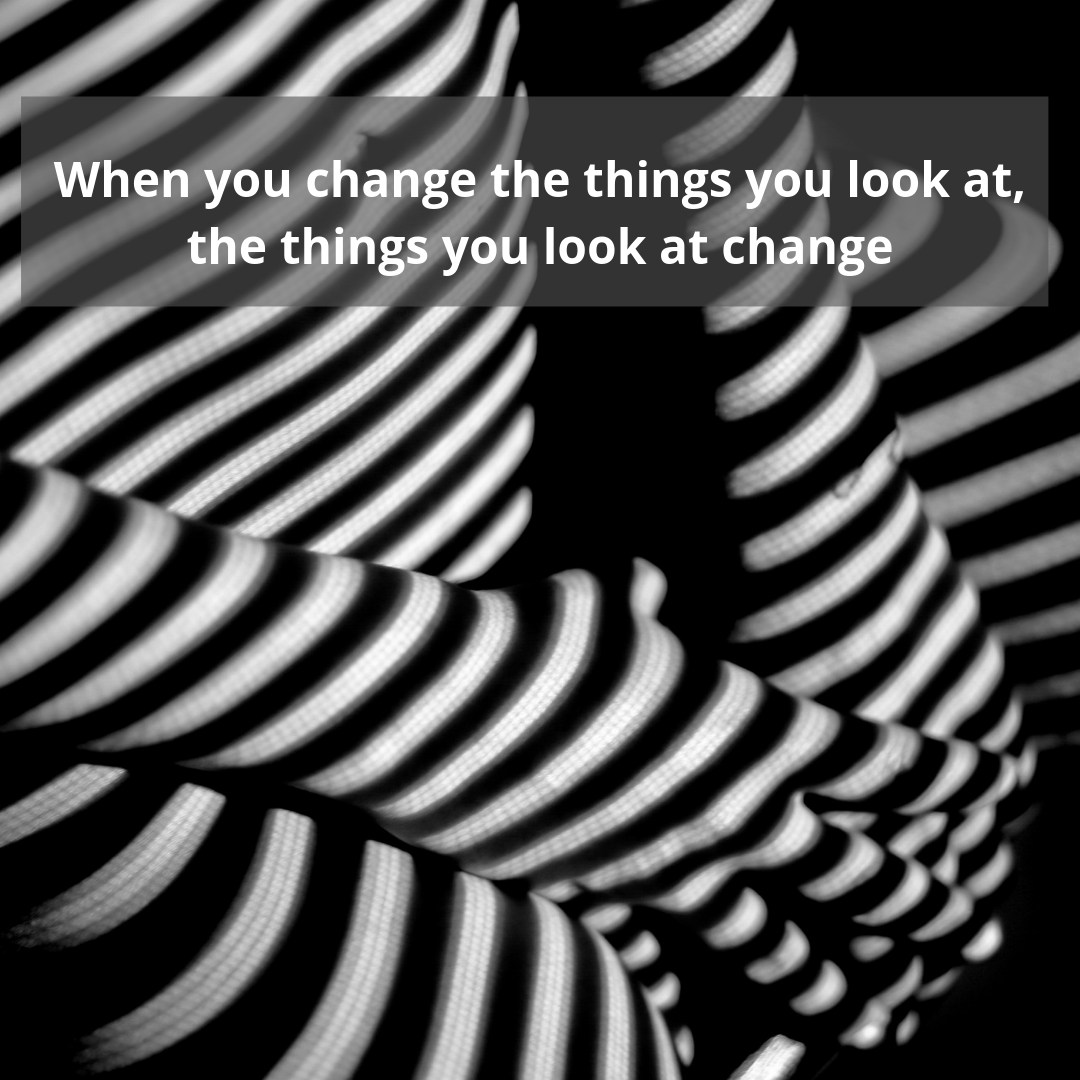I was reminded of a profound lesson recently, whilst discussing the impact of perspective with a group of my colleagues, it is the topic of many philosophical debates, that’s for certain.
Each person has a unique individual perspective, colouring their view of the world and making the same world appear totally different to anyone else’s.
Our perspective pre-programs us to select certain information from every situation; information that reinforces our own personal world.
When we find ourselves in situations that are wholly contrary to our own perspective it creates some uncomfortable ‘culture shocks’, these can have a dramatic impact.
What we look for is what we see, even if what we look for isn’t even there.
This is known as a self fulfilling prophecy.
Try it yourself with this simple exercise:
Go to your sock drawer and say ‘I can’t find my favourite socks’. Do you see them? Now go back to your sock drawer and say ‘I’m just finding my favourite socks’. Do you see them now?
In my work and personal life I have witnessed people who are, seemingly, surrounded by love, friendship and warmth, experience such profound ‘culture shocks’ that they are lead to question everything about the situation, unable to perceive a space where this happens. It always saddens me when this happens because I realise anew, each time I see it, that love is not the universal currency I might think it is, sometimes I demonstrate love or friendship to people and they are suspicious, questioning what they are feeling because they do not recognise it.
In my long and varied career I have worked in situations where £1 can mean the world to one person and has no value at all to another, it all depends on perspective and I try to keep myself level by recalling this lovely quote ‘To the world you may be one person but, to one person, you are the world”
Perspective informs our world view, of course, so when we decide to broaden our perspective that can feel extremely uncomfortable. We may start to witness behaviours in ourselves that do not gel with a broader world, or we may experience perspectives that we find difficult to accept. This is where we can learn to accept other perspectives, we don’t have to agree with them, we can choose to acknowledge them as part of life’s rich tapestry and move on.
We each have the opportunity to create the reality we experience and that is a courageous choice, it can mean freeing ourselves of all the emotional baggage and pain we carry around with us. It can mean looking at life and seeing what is, rather than what we expect to be.
When I embarked on my own therapeutic journey I didn’t feel brave; anything but. I felt exhausted and desperate. My perspective of the world was: whenever I took a step forward I would be pushed 2 steps back. My perspective of me was that I was broken. In many ways I was.
When I reflect on that time in my life now I realise that while I may have been shattered on the outside, inside me a small light still burned, I think of it as my inner pilot light, because, in the worst of dark times, it kept me going.
When I began my therapeutic journey I remember feeling very scared. What if I couldn’t get beyond this state of broken, what if I couldn’t mend, what if my experience of life was all there was?
Then I would focus on that little light inside myself and ask softly ‘and what if it’s not?’

When we change the things we look at, the things we look at change. I started to look at wellness rather than illness. I began to value and acknowledge the small changes that occurred for me. Slowly I started to focus on being whole and, funnily enough, rather quickly, that is what I became.
I was reminded of a childhood riddle my Father asked me once
Q. If it takes 2 men 4 hours to dig a hole, how long does it take 1 man to dig half a hole?
I remember thinking, OK, it takes 2 men 4 hours so it would take 1 man 8 hours so if the hole is half then it would take one man 4 hours – rushing off to tell my Dad, full of pride at my working out and he replied ‘You can’t dig half a hole, a hole is a hole, is a hole’.
Don’t let your perspective dig you into a hole, allow yourself to open up to to a future that contains all the things you have previously desired but decided are ‘not for you’.
The only person who can make that choice is you, once you’ve made it get in touch and discuss how I can help you in your transformation.
I look forward to working with you
Claire
Claire Cutler-Casey is a professional Kinesiology Practitioner and Touch For Health instructor as well as delivering a variety of business and well-being workshops designed to help you navigate the process of change.
If you would like to book a 1:1 Kinesiology session, please click here.
You can also join our online community here.


